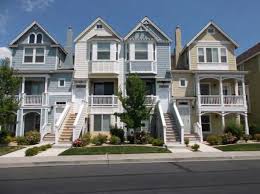
The following statistics on abused and neglected children will help practitioners quantify and plan strategies to combat child abuse and neglect.
In 1999, child protective services agencies received reports on about 2.97 million allegedly maltreated children (U.S. Department of Health and Human Services, 2001), close to the 2.9 million that were reported in the Action Plan. The allegations in 28 percent of the 1999 reports were substantiated; of those substantiated reports, 52 percent of the victims were female (U.S. Department of Health and Human Services, 2001).
Victimization rates varied by race and ethnicity. African American children had the highest rate of victimization (25.2 per 1,000), followed by Hispanics (12.6 per 1,000), whites (10.6 per 1,000), and Asian/Pacific Islanders (4.4 per 1,000) (U.S. Department of Health and Human Services, 2001). Children age 3 and younger had the highest rates of neglect (10.8 per 1,000 for boys and 10.3 per 1,000 for girls), but boys ages 4 - 11 had the highest rate of physical abuse (2.6 per 1,000). Girls were more likely to be sexually abused, with 12- to 15-year-olds in the most danger (2.8 per 1,000) (U.S. Department of Health and Human Services, 2001).
Eighty-seven percent of the victims were maltreated by one or both parents; 44.7 percent of the substantiated cases involved a mother acting alone (U.S. Department of Health and Human Services, 2001). Children under age 6 accounted for 86 percent of fatalities caused by child abuse and neglect, with children less than a year old accounting for 43 percent (U.S. Department of Health and Human Services, 2001).
To understand the effects of victimization, it is important to consider the risk factors that can lead to problem behaviors. For example, in a prospective study that followed a group of abused and neglected children (908 in the treatment group compared with 667 in the control group, who had not been abused and neglected), Kaufman and Widom (1999) reported that being abused or neglected in childhood increased the likelihood that a youth would run away from home, which, in turn, increased the risk for juvenile arrest. The abused and neglected group completed fewer years of schooling and scored significantly lower than the control group on intellectual functioning, irrespective of age, sex, race, and criminal history.
Significantly more members of the abused and neglected group held menial and semiskilled jobs, and they were more likely to be unemployed or underemployed than the members of the control group, who were more likely to be skilled workers and professionals. As a result, members of the treatment group had lower earning potential. In their personal lives, victims of child abuse and neglect also suffered greater marital instability and had a higher incidence of separation and divorce than members of the control group. The results of Kaufman and Widom's study show the long-term effects of childhood victimization and highlight the importance of efforts to prevent it.












